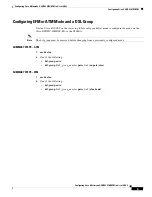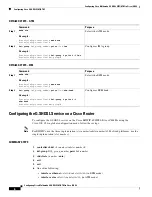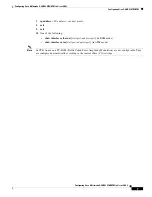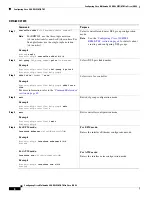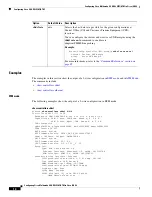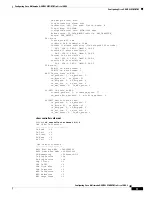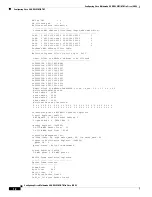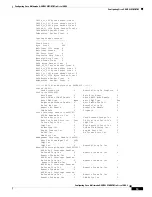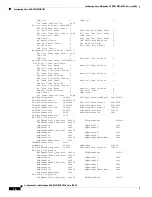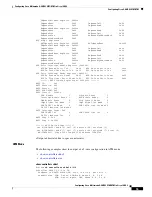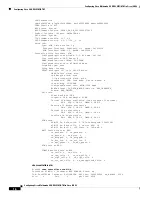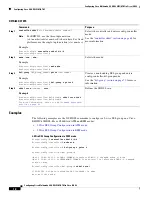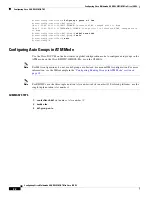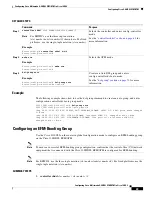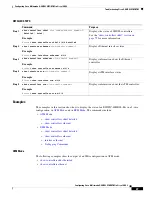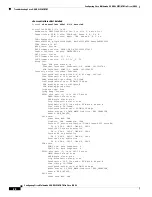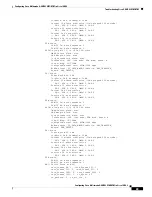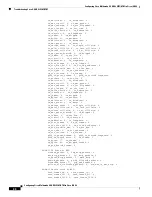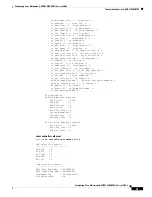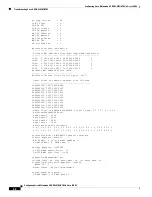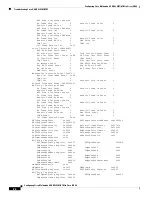
Configuring Cisco Multimode G.SHDSL EFM/ATM in Cisco ISR G2
Configuring Cisco G.SHDSL EFM/ATM
19
Configuring Cisco Multimode G.SHDSL EFM/ATM in Cisco ISR G2
Router(config-controller-dsl-group)#
shdsl rate 2304
Router(config-controller-dsl-group)#
exit
Router(config-controller)#
exit
2-Wire DSL Group Configuration in EFM mode
Router(config)#
controller shdsl 0/3/0
Router(config-controller)#
mode efm
Router(config-controller)#
dsl-group 0 pairs 0
Router(config-controller-dsl-group)#
*Mar 31 08:46:26.412: %SHDSL_EA-5-DSLGROUP_UPDOWN: SHDSL dsl-group state changed to down.
*Mar 31 08:46:28.412: %LINK-3-UPDOWN: Interface Ethernet0/3/0, changed state to down
*Mar 31 08:46:29.412: %LINEPROTO-5-UPDOWN: Line protocol on Interface Ethernet0/3/0,
changed state to down
Configuring Bonding Groups in ATM Mode
Use the Cisco IOS CLI on the router in global configuration mode to configure bonding groups in the
ATM mode on the Cisco EHWIC-4SHDSL-EA, or on the C888EA. There are two types of bonding
groups possible in ATM mode: M-pair and IMA.
Note
To ensure a successful bonding group in the ATM mode configuration, confirm that the central office
(CO) network equipment that is connected with the Cisco EHWIC-4SHDSL-EA is also configured with
the same bonding group type.
Note
For EHWICs, use the three-tuple notation (
slot number/subslot number/0
). For fixed platforms, use the
single-tuple notation (
slot number
).
SUMMARY STEPS
1.
controller shdsl
slot number / slot number / 0
2.
mode atm
3.
dsl-group
DSL_group_number
pairs
link
{
m-pair | ima
}
4.
shdsl rate
{
number
|
auto
}
Note
Annex and TC-PAM (Trellis Coded Pulse Amplitude Modulation) are not configurable. They are
configured automatically according to the central office (CO) settings.

